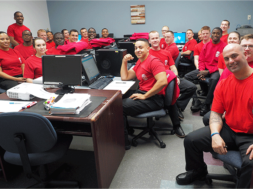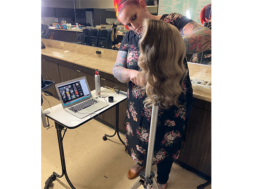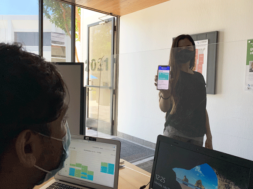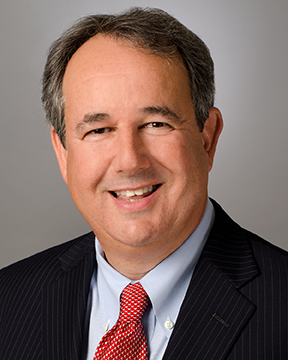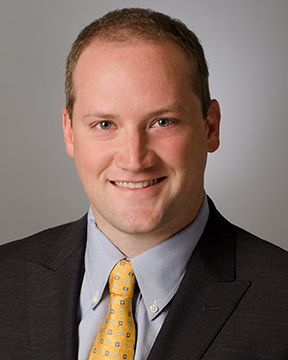
Emerging Competing Training Models: Opportunities and Challenges for Career Colleges
By Stanley A. Freeman and Sean T. Beller, Education Attorneys, Powers Pyles Sutter & Verville PC, Washington, D.C.
For many decades, private career colleges have fulfilled a key role in meeting American employers’ evolving demand for a trained and skilled workforce. That role continues today, and it will remain important going forward. But to perpetuate their success, career colleges should be mindful of the opportunities presented by alternative training models, and of the challenges that become apparent when new sources of competition emerge.
A renewed focus on competing vocational training models is critical now because, during the last 10 years, the for-profit career college sector has been rocked by intense upheaval sparked by a combination of economic, political, and marketplace conditions. Unparalleled growth in the sector between 2000 and 2010 was followed by a torrent of political crosscurrents and regulatory pressures that sparked hearings on Capitol Hill, aggressive crackdowns by federal and state regulators, a proliferation of litigation, and widespread negative media exposure that caused significant reputational harm. Traditional four-year institutions and community colleges then seized back much of the market share they had ceded to their non-traditional for-profit counterparts. An extended series of school closures exacerbated reputational harm further.
The sector shrank and entered the current period of retrenchment, renewed strategic planning, and revitalization.
While some of the market disruptions impacting career colleges have abated, concerns about excessive student borrowing levels continue to be a primary focus of federal and state lawmakers notwithstanding the change of administrations. For example, during a recent Senate HELP Committee on HEA reauthorization, Chairman Alexander stated that he is focusing on reauthorization measures that will “find ways to make sure students are not borrowing more money than they will be able to pay back.”1 And the spate of attorneys general and consumer activist litigation on borrower discharge issues is similarly the product of generalized concerns about excessive student borrowing.
Reducing reliance on student loans is a common thread that runs through several emergent career training models discussed in this article. The champions of the respective approaches vary. For example, while the Trump administration has focused on apprenticeships, other policymakers are actively pressing community colleges to claim a greater share of the occupational training market. Colleges from all sectors are seeking to expand their partnership relationships with employers, and entrepreneurs are rolling out short intensive programs that eschew the entanglements of accreditation and Title IV.
To shed some light on sources of ongoing disruption in the postsecondary market, this article focuses on examples of some of the emergent competing training models to help colleges determine how to best position themselves in preparing their students for productive careers without saddling them with excessive debt.
Apprenticeships – Will the U.S. ever approach the European models?
Government-sponsored apprenticeship programs are not a new concept in the U.S. The Registered Apprenticeship system has been in operation for over 75 years and, as administered by the U.S. Department of Labor, combines paid on-the-job training in conjunction with related instruction in a classroom environment that ultimately culminates in participants receiving a nationally recognized credential in a particular occupation.2
The federal government has made a recent push to expand the availability of apprenticeships as a pathway for students to gain on-the-job skills and eventual employment while simultaneously enabling industries to tap into needed pipelines of skilled employees.
Indeed, apprenticeships have been a focus of both the Obama and Trump Administrations. The recent focus on apprenticeships has increased the number of individuals participating in the Registered Apprenticeship program from 375,000 in 2013 to over 533,000 in 2017.3 The Obama administration included specific reference to expanding access to apprenticeships in the January 2014 State of the Union address and followed up on this stated policy priority by holding the first-ever White House Summit on American Apprenticeship in July 2014 and allocating $90 million in 2016 towards supporting state strategies to expand apprenticeship and catalyzing industry partnerships in certain industries.
The Trump administration has also made apprenticeships a priority, and on June 15, 2017, President Trump signed an executive order that established a Task Force on Apprenticeship Expansion to identify strategies to promote apprenticeships and proposed easing the regulatory burden on apprenticeship programs, including implementing more streamlined registration under the Registered Apprenticeship program. This Task Force is chaired by U.S. Department of Labor Secretary Acosta with U.S. Department of Education Secretary DeVos and U.S. Department of Commerce Secretary Ross as vice-chairs. Other Task Force members include governors and CEOs of educational and industry trade groups. The Task Force first met in November 2017 and has continued to meet in early 2018, including an upcoming meeting on March 15, 2018.4
Some commentators are concerned that the proposed streamlining of the Registered Apprenticeship system could undermine the quality assurances in the current system and could effectively open the door to a wide range of workplace training arrangements that would effectively eliminate the credibility of Registered Apprenticeship credentials.5 However, the Task Force has yet to submit a final report to the President with proposals and recommendations, so we do not yet know the particulars of the current administration’s apprenticeship policies.
There are barriers to implementing a widespread apprenticeship system in the U.S.
European countries like Germany and Switzerland have implemented highly effective apprenticeship models, but those are premised on completely integrated educational systems that include publicly funded vocational and training pathways that lead to federally recognized credentials.
These European countries also spend far more on their apprenticeship programs. For example, some have estimated that Germany spends $9 billion every year on apprenticeships, with an equal cost borne by the private sector, while the U.S. spends approximately $1-2 billion.6
There is also little if any stigma attached to apprenticeships in these European countries. The same cannot be said for the U.S. where, as one former Governor described, “There’s still this myth out there that this is shop class.”7 Accordingly, the U.S. faces both cultural as well as economic challenges to the establishment of apprenticeships as a meaningful alternative. However, emerging emphasis on apprenticeships as a viable alternative to liberal arts degrees may create opportunities for institutions with experience offering educational programs in the industrial and technological fields that have been targeted for apprenticeship growth.
Community colleges push to seize expanded career training market share
In its recent report titled, “Good Jobs That Pay Without A BA,” Georgetown University’s Center on Education and the Workforce concluded as follows:
The reported death of the middle economy is greatly exaggerated. There are 30 million good jobs in the United States today that pay without a BA (bachelor’s degree). These good jobs have median earnings of $55,000 annually … Traditionally, many people with good jobs that pay without a BA have worked in manufacturing. Those jobs are declining while the number of good jobs in skilled-services industries, such as health services and financial services, is increasing.8
The opportunities presented by the continuing strong need and demand for occupational training, which is and has been for decades the core focus for America’s private career colleges, is by no means lost on public community colleges, which have taken steps nationally to strengthen their position in the vocational training space. Take, for example, the State of California. This past July, California’s Community Colleges launched an elaborate public relations, marketing, and recruitment effort focused on career education program offerings.9 The initiative’s stated purpose is “to provide important pathways for adults to boost their skills and for high school students to learn new skills for rewarding careers,” and it includes a clearinghouse website by which California career-seekers may explore a wide variety of career options at campuses across the state.10
To further bolster the effort in California, departing Governor Jerry Brown’s final budget proposal, released in January of this year, would fund creation by the state of a fully online community college to give 2.5 million adults greater flexibility as they improve their job skills and career prospects by earning certificates and other non-degree credentials.11 The proposal, which would rely upon competency-based training, parallels approaches taken in at least two other states: Wisconsin and New York.
As demographics narrow the pipeline of recent high school graduates and young adults entering postsecondary education, these and similar workforce training initiatives by community colleges will continue to multiply nationally. This presents an opportunity for private sector colleges to prove, as they have so many times in the past, that they are best equipped to provide in-depth employer-oriented training in allied health, information technology, the skilled trades, and other areas and to spark careers that help fuel the American economy.
Coding bootcamps make their mark in Non-Title IV training
About six years ago, a breed of short-program IT training academies emerged under the tag line, “coding boot camps,” and they quickly proliferated. Viewed as an antidote to traditional college pathways that produced liberal arts and other non-STEM graduates who lacked practical and technical skills, the camps quickly began attracting droves of young people seeking to propel their ambitions by acquiring coding and programming skills in website development, big data, research, analytics, and the like.
Given the rapid growth and interest they have generated, the short-term training models deployed at coding bootcamps deserve close attention from career colleges that are seeking new and different ways to attract cash-paying students and meet employer demand. Although most bootcamps are required to be licensed in their respective states, they are typically not accredited, and they do not generally participate in the federal student aid programs.
After several years of rapid expansion, some bootcamps appear to have experienced a recent downturn, with several closing their doors during the past two years. But even so, more than 90 bootcamp companies remain operational, and they continue to attract market share by touting exceptional outcomes. One bootcamp-sponsored website that serves as a recruitment site boasts in a 2017 outcomes report that the majority of coding bootcamps graduates find full-time employment, that 80 percent of graduates surveyed say they’ve been employed in a job requiring the technical skills learned at bootcamp, and that they experienced average salary increases of 50.5 percent or $23,724.12
Coding bootcamps are virtually unregulated, in sharp contrast to the multiple layers of oversight that apply to private career colleges. As a result, the impressive placement rates and other outcomes statistics that they disseminate are subject to less external oversight, although, to their credit, some bootcamps voluntarily participate in self-regulation.13 The relaxed regulatory environment relative to what accredited, Title IV-participating career colleges must face affords greater flexibility to this competing sector.
Traditional institutions seize back the initiative in distance education
During the 2000-2010 decade, certain key innovators in for-profit education led the charge in the evolution of online delivery methodologies and became dominant players in the online market. Traditional four-year colleges and universities that had historically faced little or no meaningful competition in the marketplace for degree-granting programs were astonished to see inroads being made in this burgeoning new field. After they responded in kind, the trend was reversed. From fall 2012 to fall 2015, during a period when distance education enrollments grew 11 percent, private nonprofit colleges saw a 40 percent increase in online enrollments, public institutions realized a 13.4 percent growth rate, and for-profit online enrollments dropped 18 percent.14
The traditional sector did not accomplish this online resurgence on its own. Rather, it scored its distance learning comeback in coordination with a new cottage industry of companies that have come to be known as online program managers, or “OPMs.” While every OPM is different, these outside service providers are typically for-profit entities that offer complex services and financial arrangements to private and public non-profit institutions. The arrangements may include online program development, distance learning platforms, extensive technical support, marketing, and recruitment, in many cases with minimal up-front investment on the institutional side.
The proliferation of OPMs has enabled traditional colleges and universities that had been exclusively “brick and mortar” to recapture a substantial portion of the distance learning market.
Institutions that had lacked the capability to develop and deliver distance education programs on their own teamed their academic infrastructure up with OPMs to develop and market online programs while leveraging ongoing goodwill and brand name loyalty.
Corporate training
Some industries, and notably the automotive industry, have entered into arrangements with schools to facilitate student training on company-specific products and technology. For example, some well-known foreign car manufacturers have partnered with career colleges to offer customized advanced service technician education programs whereby the manufacturers defray the training costs of students who accept employment with that manufacturer, or its affiliated dealerships, after graduation. Typically these students must meet enhanced admissions requirements and may have to maintain a certain attendance threshold during their training, but they finish these programs with manufacturer-specific credentials and a technician status specifically designated to serve the needs of the particular manufacturer and its affiliated dealerships, thereby placing them ahead of other entry-level technicians.
Employers have also entered into arrangements with schools to provide education to their employees as a benefit rather than seeking to improve specific job-related skills. For example, Starbucks partnered with a major public university system to provide scholarships and tuition reimbursement to employees who enroll in a variety of degree programs. Similarly, Fiat Chrysler partnered with a regionally accredited for-profit school group to provide its employees access to associate, bachelor’s, and master’s degree programs as a way of fighting rapid employee turnover.
Lessons to be learned
There is much to be learned from the disruption we are seeing in career training.
Lesson number one is that not all growth is self-generated and organic! OPMs are but one example of new business models deploying outside sources by which colleges have expanded their footprints through external partnerships. As for other examples, witness the increasing impact of arrangements involving dual enrollment, “2+2” combinations between community colleges and four-year institutions, student loan benefit programs offered by employers, consortium agreements among colleges, and pathways programs where career training institutions may partner with general education providers.
Lesson number two is that there is a multitude of short-term training strategies and opportunities that can help schools diversify their program portfolios. Beyond exploring apprenticeship relationships with employers and developing bootcamp-style programs, schools should consider continuing professional education, especially in allied health, and employer-financed certification programs in information technology.15
Lesson number three is that schools should attempt to move away from reliance upon programs whose success hinges upon an abundance of student loans and Title IV. Over-borrowing has become a dirty word among students, their parents, and consumers. Congress is exploring “skin in the game” penalties and other measures aimed at reducing reliance upon federal student aid, and the outlook for future Title IV authorizations and appropriations by Congress remains unclear. It is incumbent upon postsecondary educational institutions in all sectors to identify and provide programs that produce highly skilled and in-demand graduates whose educational costs will be paid not just by Title IV, but though cash payments, employer support, private financing, and other alternative means of finance.
Resources
- https://www.help.senate.gov/chair/newsroom/press/alexander-colleges-should-be-more-accountable-for-students-not-repaying-loans
- See https://www.doleta.gov/OA/apprenticeship.cfm.
- See https://doleta.gov/oa/data_statistics.cfm.
- See https://www.dol.gov/apprenticeship/task-force.htm.
- See https://www.americanprogress.org/issues/economy/news/2017/06/15/434541/trumps-executive-order-undermine-quality-apprenticeship/
- http://foreignpolicy.com/2017/06/29/apprenticeships-germany-trump/
- https://www.usnews.com/news/articles/2016-02-09/apprenticeship-efforts-still-hampered-by-stereotypes
- https://goodjobsdata.org/wp-content/uploads/Good-Jobs-States.pdf
- http://californiacommunitycolleges.cccco.edu/Newsroom/PressReleases/2017PressReleases.aspx
- http://careered.cccco.edu/explore-careers/
- www.ebudget.ca.gov/FullBudgetSummary.pdf
- https://www.coursereport.com/reports/coding-bootcamp-job-placement-2017
- For information on one source of bootcamp self-regulation, see https://cirr.org/.
- See, “Counting Online Students,” by Jean Dimeo, Inside Higher Education, https://www.insidehighered.com/digital-learning/article/2017/04/12/report-documents-3-year-change-online-enrollments. See also “Digital Learning Compass: Distance Education Enrollment Report 2017, http://onlinelearningsurvey.com/reports/digtiallearningcompassenrollment2017.pdf
- The full range of short-term training strategies is beyond the scope of this article. For an excellent recent treatment of this subject, see “Pursuing a Non-Title IV Short-Term Training Strategy” by Jim Tolbert and Timothy Armstrong in the January 2018 issue of Career Education Review.
STANLEY A. FREEMAN joined Powers Pyles Sutter & Verville in 1994. He is the former president of the firm and founder of the firm’s education practice.
Stanley counsels postsecondary educational institutions from all sectors of higher education regarding strategic issues pertaining to participation in the federal student financial assistance programs, accreditation, licensure, and related regulatory concerns. He was selected by his peers for inclusion in the 2009 – 2017 editions of The Best Lawyers in America in the specialty of Education Law.
Stanley has been actively involved in representing educational institutions for more than 20 years. In his practice, he counsels individual educational institutions, corporate investors in higher education, associations of schools and colleges, and allied educational companies on administrative, transactional, regulatory and litigation matters. He has represented numerous schools before the U.S. Department of Education and before other federal agencies, state educational oversight agencies, and accreditors on compliance matters, financial responsibility concerns, legislative issues, and investigative matters. He has also litigated cases in the state and federal courts. He spends much of his time advising clients concerning regulatory and compliance matters arising under the Higher Education Act of 1965, including program reviews, audits, substantive changes, changes in ownership and control, and other oversight matters.
Stanley has authored numerous articles on federal student financial aid issues for higher education publications and frequently speaks to gatherings of college officials and student aid administrators.
Stanley graduated with distinction from the Honors College of the University of Michigan in 1978 and earned his law degree from the Georgetown University Law Center in 1982. He is admitted to practice law in the District of Columbia, Maryland and Virginia. Stanley is a lifelong resident of the Washington area, and he and his wife Cecilia have five children.
Contact Information: Stanley A. Freeman // Principal // Powers Pyles Sutter & Verville PC // 202-466-6550 // Stan.Freeman@PowersLaw.com // www.PowersLaw.com // LinkedIn – PowersPylesSutter&VervillePC // Twitter: @PowersLawFirm // Facebook: @PowersPylesSutterAndVervillePC
SEAN BELLER is a principal in the firm’s education practice and has focused exclusively on representing universities, colleges, and other postsecondary schools, service providers, investors and lenders on compliance, litigation and transactional matters since 2009. Sean advises clients on compliance issues arising out of all aspects of the federal, state, and accrediting agency regulation of public and private postsecondary educational institutions, with a primary focus on Title IV federal student aid matters.
Sean represents clients in a variety of proceedings before federal, state, and accreditation agencies. He also assists clients with internal reviews and investigations on a wide range of compliance matters and with external investigations conducted by federal and state authorities, including the Department of Justice and the U.S. Department of Education Office of Inspector General.
Sean counsels clients on regulatory and transactional issues arising from acquisitions and investments in postsecondary educational institutions and service providers as well as in educational service contracts between colleges and service providers and in credit agreements between institutions and lenders. He develops and negotiates agreements, advises on regulatory risks and transaction structuring, supervises and conducts due diligence reviews, and secures regulatory approvals of transactions.
Contact Information: Sean T. Beller // Principal // Powers Pyles Sutter & Verville PC // 202-466-6550 // Sean.Beller@PowersLaw.com // www.PowersLaw.com // LinkedIn – PowersPylesSutter&VervillePC // Twitter: @PowersLawFirm // Facebook: @PowersPylesSutterAndVervillePC




